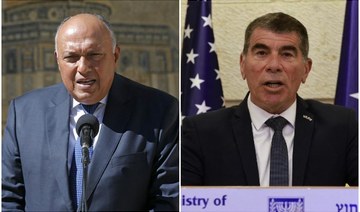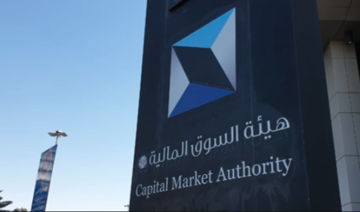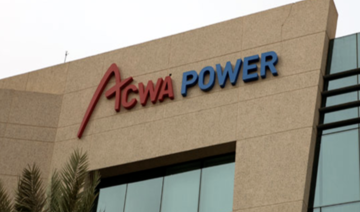JERUSALEM: Israel and the United Arab Emirates signed a tax treaty on Monday, Israel’s Finance Ministry said, describing the move as a spur to business development between the countries after they normalized relations last year.
The UAE finance ministry said in October that it had reached a preliminary agreement with Israel on avoiding double taxation.
The tax convention, once ratified by ministers and parliament this year, will be Israel’s 59th and go into effect on Jan. 1, 2022.
It is the first tax treaty reached in the wake of Israel’s normalizing relations with the UAE and Bahrain last year. In parallel, Israel has moved to improve ties with Morocco and Sudan.
The treaty is based primarily on the OECD model, Israeli Finance Minister Israel Katz said in a statement, adding that it “provides certainty and favorable conditions for business activity and will strengthen economic ties” with the UAE.
Under the agreement, tax deductions, dividends and royalties are capped.
Israeli Foreign Minister Gabi Ashkenazi said the treaty will enable significant promotion of investment and trade that will help both countries’ economies.
Since a normalization deal was signed last September, Israeli and Emirati banks and other companies have signed cooperation deals, while also establishing direct flights.
Israel, UAE sign tax treaty to boost economic cooperation
https://arab.news/8c9d6
Israel, UAE sign tax treaty to boost economic cooperation

- The UAE finance ministry said in October that it had reached a preliminary agreement with Israel on avoiding double taxation
SAR sees 9% annual growth in cargo transported

RIYADH: The volume of minerals and goods transported by Saudi Arabia Railways reached 6.34 million tonnes during the first quarter of 2024, an annual increase of 9 percent.
According to its quarterly report, SAR stated that over 2.7 million passengers utilized its services, marking a 23 percent growth compared to same period last year.
Passenger rides also increased by 3 percent, reaching a total of 8,252 trips across the East Train, North Train, and Haramain Express train networks.
Saudi financial sector expands ambitions, eyes foreign investment surge: report
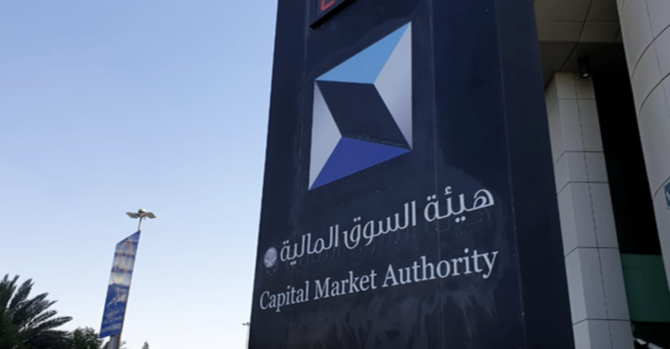
RIYADH: Saudi Arabia aims to enhance its stock exchange appeal to foreign investors, targeting 17 percent ownership of free float shares by 2024, a new report has revealed.
According to the 2023 Financial Sector Development Program document, the Saudi Capital Market Authority plans to boost assets under management to 29.4 percent of gross domestic product by 2024 by increasing the investment environment and attracting more investors.
The report, published annually, highlights the achievements in the financial sector, particularly the Kingdom’s ongoing progress in competitiveness indicators related to the capital market, as stated by Mohammed Al-Jadaan, minister of finance and chairman of the FSDP.
Commenting on the development of the financial sector, Al-Jadaan emphasized the importance of innovation and investment in talent and technology.
“We have placed innovation and investment in both talent and technology at the top of our priorities, because we recognize the importance of building a dynamic financial environment that allows companies — especially startups — to flourish and succeed,” the minister stated.
In line with its commitment to facilitating financing in the capital market, the CMA also plans to accelerate the pace of listings by welcoming 24 new companies in 2024.
Moreover, there will be a focus on supporting the development of new and promising sectors, with a target of having micro and small enterprises account for 45 percent of total listings.
Another area of emphasis is the deepening of the sukuk and debt instruments market, with the goal of increasing the debt-to-GDP ratio to 22.1 percent by the end of 2024. These measures aim to provide diverse financing options for companies and further stimulate economic growth.
“The capital market ecosystem continued its efforts to contribute to developing the financial sector and achieving the Saudi Vision 2030,” stated Mohammed El-Kuwaiz, chairman of the CMA.
“By approving rules for foreign investment in securities and streamlining regulatory procedures, we have witnessed a significant increase in foreign investments in the capital market, reaching SR401 billion ($106.9 billion),” El-Kuwaiz added.
The Saudi Central Bank also reaffirmed its commitment to adhering to international standards and best practices to enhance the strength and stability of the financial sector.
Initiatives such as developing digital solutions for supervising the financial sector and enabling local and international FinTechs demonstrate the Kingdom’s dedication to embracing technological advancements.
Furthermore, the Financial Academy unveiled its new strategy for 2024-2026, focusing on enhancing human capabilities in the financial sector through training programs and professional certifications.
The academy aims to increase the number of trainees and improve the quality of its services to meet the evolving needs of the industry.
The 2023 FSDP report highlighted significant progress across sectors like fintech and digital banking.
The Kingdom saw a surge in fintech companies, surpassing 2023 targets with 216 in operation and launching two digital banks.
Saudi Arabia claimed the top spot in the Corporate Boards Index among G20 nations and secured second place in various indices. Foreign companies relocated headquarters to the Kingdom, deepening the capital market.
Moody’s, Fitch, and S&P Global Ratings revised Saudi Arabia’s outlook to “Positive” and affirmed its “A1” and “A+” credit ratings, citing fiscal policy development, economic reforms, and structural improvements.
Saudi Arabia led venture investments in the Middle East & North Africa, securing 52 percent of total investments in 2023, and allocated SR10 billion to support small and medium enterprises across economic activities and regions in the first half of the year.
ACWA Power signs $1.51bn senior debt financing agreement for Qassim 1 Power Plant
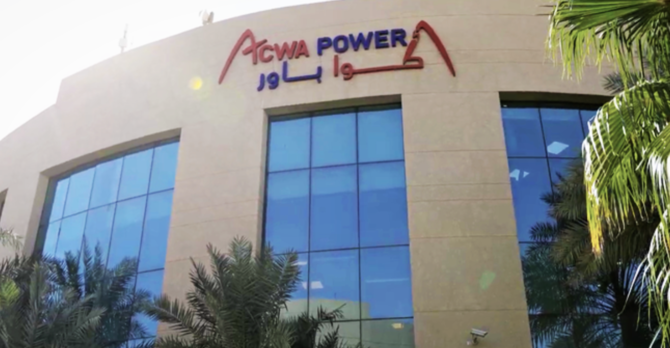
RIYADH: Saudi utility firm ACWA Power has signed a senior debt financing agreement for the Qassim 1 Combined Cycle Power Plant for SR5.69 billion ($1.51 billion).
The deal, signed through Qudra One for Electricity Co., will extend for 28 years, according to ACWA Power’s statement to Tadawul.
International and local commercial lenders, including Standard Chartered Bank, Bank of China, and Riyad Bank, as well as Saudi National Bank, Alinma Bank, Saudi Investment Bank, and Saudi Awwal Bank, financed the senior debt.
Abu Dhabi’s ADQ lists debut $2.5bn bonds on London Stock Exchange

The smallest of three Abu Dhabi sovereign wealth funds ADQ has listed a dual tranche $2.5 billion bond on the London Stock Exchange, the fund said in a statement.
The fund sold a $1.25 billion five-year portion at 80 basis points over US Treasuries and another $1.25 billion 10-year tranche at 90 bps over the same benchmark, fixed income news service IFR reported.
Citigroup, Credit Agricole, First Abu Dhabi Bank, Goldman Sachs International, HSBC and Standard Chartered were joint global coordinators and active bookrunners on the bond issuance deal.
The proceeds from the debt sale, which was oversubscribed more than 4.4 times, will diversify ADQ’s funding mix, enhance financial resilience and contribute growth capital.
US Fed leaves rates unchanged, flags ‘lack of further progress’ on inflation
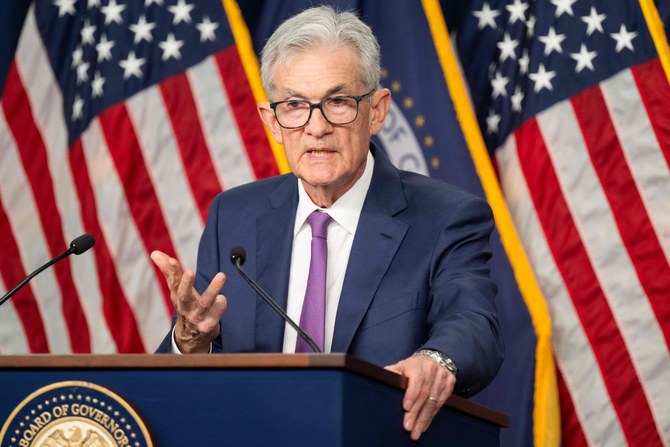
- Policy rate remains in 5.25 percent-5.50 percent range
- Fed policymakers concerned by recent inflation data
- Markets take ‘dovish’ view of Fed chief’s remarks
WASHINGTON : The US Federal Reserve held interest rates steady on Wednesday and signaled it is still leaning toward eventual reductions in borrowing costs, but put a red flag on recent disappointing inflation readings that could make those rate cuts a while in coming, Reuters reported.
Indeed, Fed Chair Jerome Powell said that after starting 2024 with three months of faster-than-expected price increases, it “will take longer than previously expected” for policymakers to become comfortable that inflation will resume the decline toward 2 percent that had cheered them through much of last year.
That steady progress has stalled for now, and while Powell said rate increases remained unlikely, he set the stage for a potentially extended hold of the benchmark policy rate in the 5.25 percent-5.5 percent range that has been in place since July.
US central bankers still believe the current policy rate is putting enough pressure on economic activity to bring inflation under control, Powell said, and they would be content to wait as long as needed for that to become apparent — even if inflation is simply “moving sideways” in the meantime.
The Fed’s preferred inflation measure — the personal consumption expenditures price index — increased at a 2.7 percent annual rate in March, an acceleration from the prior month.
“Inflation is still too high,” Powell said in a press conference after the end of the Federal Open Market Committee’s two-day policy meeting. “Further progress in bringing it down is not assured and the path forward is uncertain.”
Powell said his forecast remained for inflation to fall over the course of the year, but that “my confidence in that is lower than it was.”
Whether there are rate cuts this year or not remains in doubt.
“If we did have a path where inflation proves more persistent than expected, and where the labor market remains strong but inflation is moving sideways and we’re not gaining greater confidence, well, that would be a case in which it could be appropriate to hold off on rate cuts,” Powell said. “There are paths to not cutting and there are paths to cutting. It’s really going to depend on the data.”
Despite the uncertainty of the current economic moment, Powell’s characterization of rate hikes as “unlikely” cheered investors concerned about a newly hawkish Fed chief.
US stock and bond prices turned higher as Powell preached patience that may delay rate cuts, but also means a high bar for any more hikes. The Fed raised its benchmark policy rate by 5.25 percentage points in 2022 and 2023 to curb a surge in inflation.
Powell’s remarks on Wednesday were “notably less hawkish than many feared,” said analysts at Evercore ISI. “The basic message was that cuts have been delayed, not derailed.”
Investors in contracts tied to the Fed’s policy rate increased bets that rate cuts could begin in September rather than later in the year as reflected in earlier market pricing.
Balance Sheet
The Fed’s latest policy statement kept key elements of its economic assessment and policy guidance intact, noting that “inflation has eased” over the past year, and framing its discussion of interest rates around the conditions under which borrowing costs can be lowered.
“The Committee does not expect it will be appropriate to reduce the target range until it has gained greater confidence that inflation is moving sustainably toward 2 percent,” the Fed repeated in its unanimously-approved statement.
That continues to leave the timing of any rate cut in doubt, and Fed officials made emphatic their concern that the first months of 2024 have done little to help the cause.
“In recent months, there has been a lack of further progress toward the Committee’s 2 percent inflation objective,” the Fed said in its statement.
The US central bank also announced it will scale back the pace at which it is shrinking its balance sheet starting on June 1, allowing only $25 billion in Treasury bonds to run off each month versus the current $60 billion. Mortgage-backed securities will continue to run off by up to $35 billion monthly.
The step is meant to ensure the financial system does not run short of reserves, as happened in 2019 during the Fed’s last round of “quantitative tightening.”
While the move could loosen financial conditions at the margin at a time when the US central bank is trying to keep pressure on the economy, policymakers insist their balance sheet and interest rate tools serve different ends.
The Fed maintained its overall assessment of economic growth, saying that the economy “continued to expand at a solid pace. Job gains have remained strong and the unemployment rate has remained low.”
Powell reconciled that with the relatively weak, 1.6 percent growth of gross domestic product in the first quarter by saying that the 3.1 percent increase in private domestic demand was a better gauge of where the economy stands, with output buttressed by a recent jump in immigration.
Asked about the risk the US was entering a period of “stagflation” with stagnant growth and rising prices, Powell said current conditions are nothing like those seen in the late 1970s when prices were rising more than 10 percent annually at one point alongside high unemployment.
“Right now we have ... pretty solid growth ... We have inflation running under 3 percent,” Powell said, adding: “I don’t see the ‘stag’ and I don’t see the ‘flation,.’”




